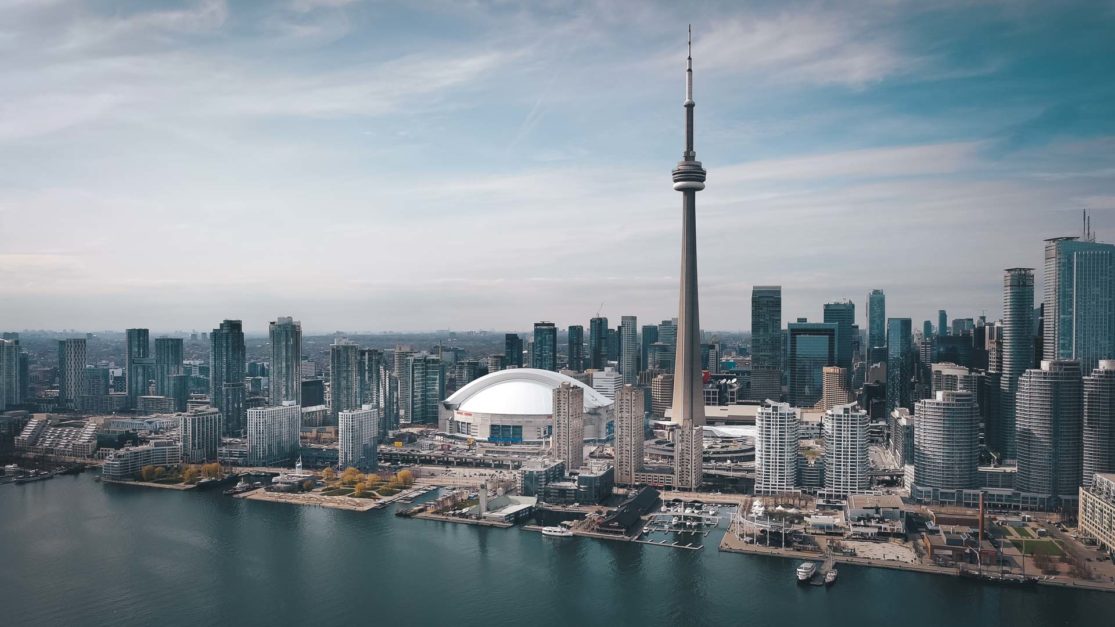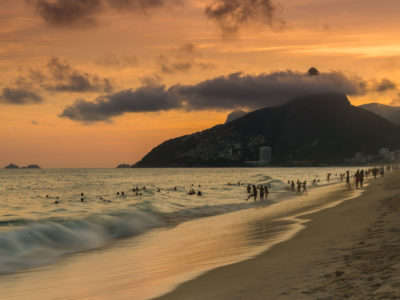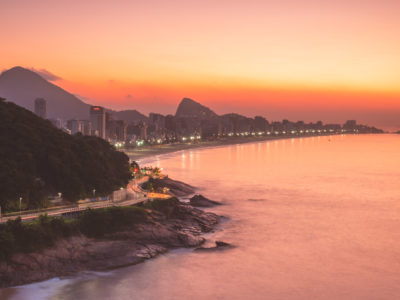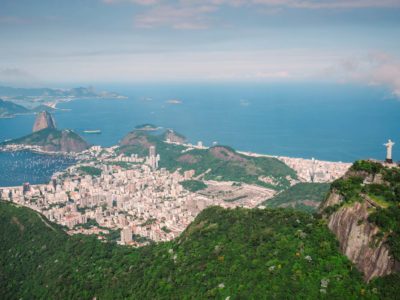Brazil is the largest country in South America and a top tourist destination. In fact, Brazil has its own Ministry of Tourism, which ensures touring is as easy as possible for visitors.
It is a fun, vibrant country and home to iconic landmarks, including Iguazu Falls and the towering Christ the Redeemer statue.
Explore the Amazon Rainforest, go to one of many (over 2,000) beaches, meet friendly and diverse locals, or try some authentic Brazilian cuisine. There is a lot to see and do here.
This Brazil travel guide will help you plan your next vacation.
Table of contents
Table of Contents
Fast Facts about Brazil
- Power voltage is 127V- 220V at 60 Hz depending on location. About 60% of households use 127V. Plug C and N.
- Brazil’s currency is the Brazilian Real (R$) and 1 R$ is equal to 0.26 USD.
- Traveling by bus is considered the best way to get around Brazil.
- You no longer need a tourist visa, just a valid US passport.
- The most popular cellular networks in Brazil are Vivo, TIM, and Oi. You can purchase a prepaid SIM card through these networks.
- VAT: The state average value-added tax (VAT) comes at 17%, though it goes 18% in São Paulo, Minas Gerais and Paraná, and 19% in Rio de Janeiro.
- Language: Remember Brazilians do not speak Spanish, they speak Portuguese. Try to avoid speaking to Brazilians in Spanish as its not the same language and they won’t necessarily understand what you are saying. Furthermore, English is not widely spoken, even in tourist cities of Rio de Janeiro and São Paulo, so brush up on some basic Portuguese words and sayings before you go. Remember it’s not Gracias but Obrigado | Obrigada.
Things to See and Do in Brazil
- Fly over Rio de Janeiro: Rio needs to be seen from a helicopter to truly take in the scope of its beauty. Helisul is the premier helicopter tour operator in the city, and we can understand why, these guys were friendly, welcoming and top-notch.
- Go See Iguassu Falls: Iguassu Falls is one of the must-see natural wonders on earth. As a matter of fact, it was recently named one of the new 7 Natural Wonders in the world.
- Sandboard in Floripa: Sandboarding at the dunes of the famous Joaquina beach, one of the most famous beaches of Florianopolis.
- Visit the Ecotourism capital of Brazil: if you are craving an adventure, than Bonito in Mato Grosso do Sul is the just the place for you. Our recommendation? Abismo Anhumas a huge, stalactite-covered cavern that offers abseiling and diving in an underground lake.
- Visit the Amazon and stay at the Uakari Lodge: the lodge is managed by shared management among Mamirauá Institute and the communities from Mamirauá Reserve. The enterprise’s aim is to generate income for the local people and to contribute to natural resources’ preservation. Ten communities from the reserve act managing the Lodge, the employees, the contractors, and the salespeople.
- Visit Copacabana and Ipanema Beach: While in Rio, we tried three different hotels on three different beaches. If you are going to stay in Rio, you may be interested in one of these three Rio hotels.
- See Christ the Redeemer: One of the most iconic things to do in Rio de Janeiro is to visit Christ the Redeemer. It’s one of the most recognized in the world. When picturing Rio, this is what everyone envisions. Christo Redentor stands proudly over the city at the top of Corcovado Mountain.
- Visit Jericoacoara: Jeri is a very special fishing village on the northeast coast of Brazil in Ceara, 330 kilometers northwest of Fortaleza. It was once hailed as having one of the ten most beautiful beaches in the world by the Washington Post. Jericoacoara is surrounded by dunes, freshwater lagoons and set in a national park. The only way to get to Jeri is a 4×4 Jardineira vehicle or buggy. It is known as the perfect place for kitesurfers and surfers. Paradise is waiting.
- Take a Favela Tour: If you want to learn more about Rio culture, take a favela tour to visit local communities. There are 800 favelas in Rio and nearly 1.5 million people inhabit these communities.
- Explore the Downtown of Rio de Janeiro: Downtown Rio is definitely worth spending a day to explore. The alleyways are charming mazes filled with cafés and stores. There’s markets, cathedrals, museums, and monasteries. If you get a chance, be sure to take a Rio City tour.
- See the Museum of Tomorrow: Opening in December 2015, it is one of the world’s most extraordinary architectural designs.
- Go on on an Afro-Walking Tour: Did you know that Rio was the largest slave port in history? It is also the birthplace of samba. Learn about the rich history of Rio de Janeiro on this incredibly informative walking tour.
Brazil Travel Guides
Budgeting
Accommodation
Budget: Brazil offers many hostels in the range of 50-100 Brazilian Reals per night.
Mid-Range: For mid-range hotels, expect to pay around 190-260 Brazilian Reals per night.
High-End: Upscale hotels will cost 350-750 Brazilian Reals per night.
- Check out our favorite booking platforms Booking.com, Tripadvisor and VRBO for the best deals on accommodation.
Food
Brazil offers many exciting options for food. Bolinhos de bacalhau (codfish balls) and pastels (deep-fried stuffed pastries) are some of the things you can find when in Brazil. Expect to pay around R$15 for a meal, or R$55 total per day.
Food: If you’re hungry, we would highly recommend visiting a por kilo restaurant. The concept is just like a buffet but in the end, you weigh your food and pay in terms of weight. The por kilo restaurants have a huge variety of delicious food, including some Brazilian favorites like farofa [a toasted cassava flour mixture], feijão, pastel [think deep-fried empanadas] and of course grilled-to-order meat [with garlic sauce!]. Yum!
Drinks: Make sure to drink a Caipirinha! It Brazil’s national cocktail, made with cachaça, sugar, and lime. They also make fruit caipirinhas, we would recommend the maracujá [passion fruit] caipirinha.
The tap water in Brazil is increasingly safe to drink. However, as a result of the treatment process, it still doesn’t taste great. To be on the safe side, drink bottled or filtered water (most Brazilians do). All brands are reliable; ask for agua sem gas for still water and agua com gas for carbonated water.
Water: If you ask for water in a restaurant, you will be served with a bottle of water (charged to your account) unless you specifically request água da casa [water of the house].
The Best Ways to Get Around Brazil
Getting to Brazil:
Getting to Brazil: If going to Rio de Janeiro, the Galeão Airport is one of the best and is located just 12 miles from the city center. For those traveling to São Paulo, São Paulo-Guarulhos International Airport is the best.
You can check for the best flights on Skyscanner.
Transportation:
Bus: Buses are a cheap way to get around Brazil, as well as the preferred way to travel locals. Fares are 3 to 4 Brazilian Reals for one way.
Train: Trains are rarely used in Brazil except for cargo, though there are a few train rides made for tourists. To learn more, click here.
Renting a car: To rent a car in Brazil, you must be at least 21 years old, have a valid driver’s license and passport. Prices start around 8 Brazilian Reals per day. Check out Rentlcars.com to compare the best rates
When to go To Brazil
As the temperature is great year-round (an average of 80s degrees Fahrenheit), the best time to visit depends on what you want to do.
If you want to see as many animals in the Amazon as you can, going between April to October is your best bet.
If traveling to Rio, December to March is the driest season and is also the season when popular events like the New Year’s Eve celebration (Réveillon) and the Fat Tuesday festival occurs.
For the cheapest flights, go in March.
Where to Stay in Brazil
Hilton Barra Rio de Janeiro: This 5-star hotel is bus accessible and a short walk to the Maria Lenk Aquatic Center, Citibank Hall, and the beach. The Hilton provides a full range of services, including babysitting, laundry, room service, bicycle rentals, a fitness room, outdoor pool and lounge area, and wheelchair ramps, as well as gorgeous views of Rio de Janeiro.
Hotel Nacional Inn Campos do Jordão: This three-star hotel is located in the entertainment center of Sao Paulo. Whether traveling alone, with a partner, or with a family, this hotel has multiple options for rooms, including a Quadruple room for up to 4 guests, and a romantic room complete with complimentary rose petals. Free high-speed Wi-Fi, a fitness room, minibars, sport court, and game room, and breakfast are also included.
Sol Bahia: Right by the water, this casual hotel offers beautiful ocean and beach views from the hotel. It’s just a few miles from Salvador shopping. The hotel also comes with a children’s play area, restaurant and bar, an outdoor pool, free Wi-Fi, single and family rooms, and LCD TVs with cable, among other things.
Read our recommendations at Three Great Hotels in Rio on the Best of the City’s Beaches
Check out our favorite booking platforms Booking.com, Tripadvisor and VRBO for the best deals on accommodation.
Brazil Accommodation Guides
What to Pack for Brazil
Packing for Brazil can be tricky depending on the areas that you will be visiting and the time of year.
Temperatures below the equator are high and there is very little seasonal variation, although at times it can get cool enough to wear a jacket.
If visitors venture more South, especially during Brazil’s winter months [June – September], expect much colder temperature with the possibility of frost or even snow [although rare].
The cities of Belo Horizonte and Brasília have moderate temperatures, usually between 15 and 30 °C (59 and 86 °F). Rio de Janeiro, Recife, and Salvador on the coast have warm climates, with average temperatures of each month ranging from 23 to 27 °C (73 to 81 °F), but enjoy constant trade winds.
Winter in Rio de Janeiro can be chilly. The cities of São Paulo, Curitiba, Florianópolis and Porto Alegre have a subtropical climate similar to that of the southern United States, and temperatures can fall below freezing in winter.
- Leave your valuables at home – New Apple watch? Expensive diamond earrings? Gold chain? Leave all your shiny, expensive valuables at home.
- Classic Basic items – You do not need to be a fashionista to blend in. The key is in embracing neutrally toned items that can be mixed and matched easily. Avoid logos, baseball caps, shorts, hoodies, flip-flops, and running shoes as these items scream tourist!
- Personal Safety products – Certain areas in Brazil are known as pickpocket hotspots; before leaving for your trip, make sure to pack some personal safety products, like money belts and locks, so that you can keep
- Get Medical Insurance – adventure and eco-travel is common in Brazil; if you plan on trekking in the Amazon; paragliding and/or hiking, make sure to be covered just in case.
- Bug Spray! – As of April 2017, the World Health Organization has updated their yellow fever vaccination recommendations in terms of Brazil as the yellow fever virus transmission continues to expand towards the Atlantic coast of Brazil in areas not deemed to be a risk for yellow fever transmission prior to the review risk assessment.
- As a result of this make sure to cover exposed skin by wearing long-sleeved shirts and long pants, use EPA-registered insect repellents containing DEET, picaridin, oil of lemon eucalyptus (OLE, also called para-menthane-diol [PMD]), IR3535, or 2-undecanone (methyl nonyl ketone)(Always use as directed) OR Use permethrin-treated clothing and gear (such as boots, pants, socks, and tents).
- Lastly, if you are traveling from Brazil to another country make sure to check if you need a yellow fever vaccination certificate or might be denied entry.
- Rain gear – if you plan on visiting São Paulo and/or Rio in the wintertime, be prepared for rain; make sure to bring along an umbrella and/or a raincoat.
Brazil Travel Guide: Best Booking Resources
Whenever we travel to we make sure to start with these companies. We have tried a lot of different ones over the years and all of these have consistently proven to be the best when it comes to offering great prices.
We have used every one of these personally and continue to do so.
- Booking.com: This is our go site to when comparing prices for accommodation. It usually has the cheapest prices, especially in Europe and we love their interface. Not to mention you get free cancellation and you are guaranteed the best price.
- Trip Advisor: What we like about Trip Advisor is that we can look at all the reviews and then book our accommodation. TripAdvisor is where we go when we want to compare prices with multiple accommodation providers.
- VRBO: is the main search engine we use when we are looking for a home or apartment rental. It can sometimes be cheaper than hotels and it is the best way to stay in areas that offer a more local feel.
- Hostelworld: With one of the largest databases of hostels in the world, Hostelworld is the go-to site when you are looking for budget accommodation.
- Skyscanner: This is the first place we check for flights. It consistently comes back with the cheapest and best options. It allows us to compare a lot of airlines to get the best price.
- Rome 2 Rio: If you want to see how to get somewhere by plane, train, bus, ferry or car Rome2Rio lays it all out for you as well as related costs.I love how they show it all to you on a Google Map and it works offline.
- Get Your Guide: For all your day trip and city guide needs, we use Get Your Guide. It has the world’s largest collection of things to do with more than 30,000 activities in 7500 destinations.
- World Nomads Insurance: When traveling to Italy you should always have travel insurance. We have found the best bang for your buck is by far World Nomads.




